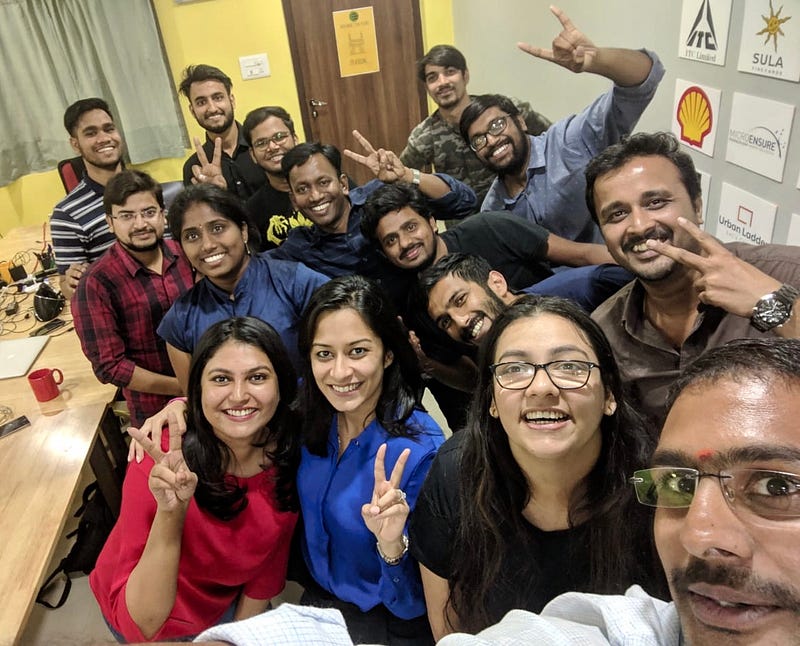Image: Shutterstock
New Harvard findings show our technology-based approach is levelling the playing field for female job seekers in India.
One of the main reasons we started Shortlist was to help eliminate the biases that so many job seekers face during their application process. This is especially true for female candidates, who continue to encounter bias and discrimination—sometimes due to reasons that are unconscious to hiring managers. So how do you introduce objectivity into such a human endeavor to create a gender-neutral hiring process?
Imagine all the different steps involved in the screening process alone. Each one has historically been tilted in favour of male applicants: from the user interface that candidates experience (usually developed by male designers), to the wording used in application questions (full of male-gendered language like “ninja”), to opportunities for candidates to self-report their strengths (men consistently overstate these relative to women) to the signals employers are given by recruitment teams (usually leading with the name, not the assessment results).
One of the founding principles behind Shortlist is to move away from the archaic CV-driven recruitment process to a world where candidates are given the opportunity to demonstrate their competencies and fit for a role. We believe that technology isn’t a panacea to eliminate all bias in recruitment, but when used correctly, can be a powerful tool for helping create a gender-neutral hiring process that supports trained human resource teams to produce significantly more objective and ultimately better-performing hiring outcomes.
New independent and peer-reviewed research, published in partnership with Shell Foundation and the UK’s Department for International Development, provides fresh evidence that we’re on the right track in our goal to eliminate gender bias in the recruitment process.
As part of their Masters in Public Administration programme at Harvard, Rachel Levenson and Layla O’Kane spent weeks analysing the Shortlist hiring process in India to help understand how a technology-based approach to hiring, underpinned by competency-based assessments, would affect the gender breakdown of the candidates we submit to clients for interviewing and hiring. Levenson and O’Kane statistically analysed key metrics in our candidate database, reviewed our screening logic, and spoke to our recruitment teams, clients, and jobseekers. They also analysed the broader Indian job market to establish a baseline around gender inclusion to help place conclusions about Shortlist’s model in context.
We didn’t know what they would find.
The paper that resulted from this work, “Gender Inclusion in Hiring in India,” has validated that Shortlist’s approach provides a gender-neutral hiring process for candidates. What does this mean? Among several other key conclusions, the researchers found no signs of gender bias in the evaluative stages of the hiring process. Once women complete their application, they are equally likely as men to be shortlisted for the job.
The authors also developed other key insights about gender in the recruitment process, including the reality that women are more likely to apply to jobs for which they meet all the minimum selection criteria as compared to male applicants. This insight points to the drawbacks of employers including a laundry list of “nice to haves” masquerading as “requirements” in their job description. We’d encourage you to read the full paper, or at least the Policy Brief.
At Shortlist, we’re proud that over 70% of our leadership team and 65% of our overall employee base is female. While many of our clients use Shortlist specifically to help diversify their teams, we know that we still have a long way to go.
For instance, we need better data to point to the performance of female candidates to prove to skeptical hiring managers what we already know from seemingly endless anecdotal evidence and decades of combined experience in management and recruitment: that on-the-job performance is a function of competency, intelligence and attitude, not gender.
The researchers themselves highlighted several gender-related questions worthy of additional research, including how to attract and hire women who are seeking to re-enter the workforce after family leave. We also need to examine the organisations that have created a gender-diverse workforce across seniority levels and the practices they used to achieve this. We also need better data and examples that point to how we can reduce bias in the recruitment process for other minorities, such as LGBT or disabled candidates, both of which face discrimination when applying in many markets.
This research has pointed to ways in which we can meaningfully foster a gender-neutral hiring process during recruitment. At Shortlist, we’re actively working to further improve our process, including helping to diversify the workforce of sectors like energy that have traditionally been dominated by men. We’ll be highlighting examples of employer best practices and using data to connect the dots between recruitment practices and on-the-job performance.
Send us your ideas and watch this space as we continue our journey to level the playing field for jobseekers.










































